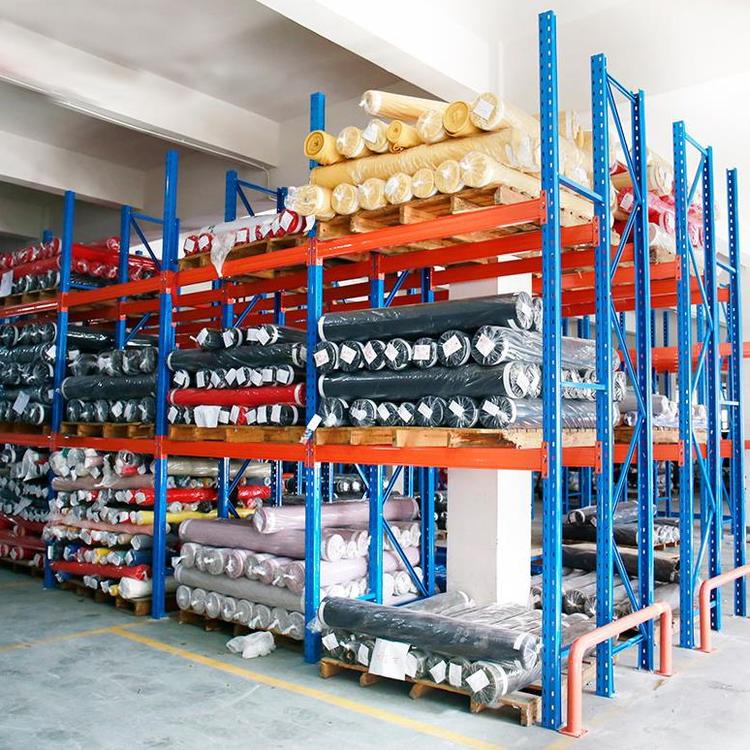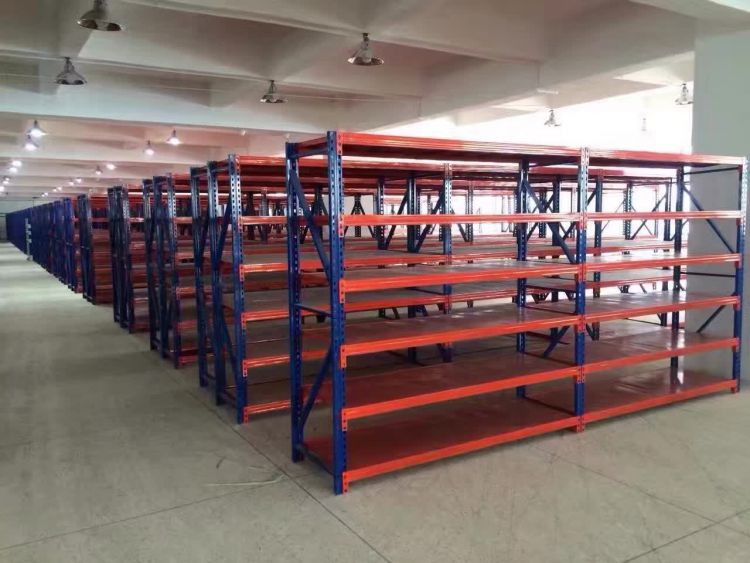Selective pallet racking forms the backbone of countless warehouses worldwide, offering unparalleled flexibility and efficiency for storing goods. But what truly makes these systems work? Understanding the individual parts of racking is crucial for anyone involved in warehouse design, operation, safety, or maintenance. Each component plays a specific, vital role in ensuring the system's stability, safety, and load-bearing capacity. This article delves into the fundamental elements that constitute a typical pallet racking system, explaining their function, importance, and variations.

1. The Backbone: Upright Frames
Often referred to as uprights, columns, or frames, these vertical structures are the literal and figurative backbone of any racking system. They bear the entire vertical load of the stored goods, the beams, and the decking.
Function: Provide the primary vertical support and define the height and depth of each storage bay. They feature a series of holes or slots (teardrop-shaped or round) along their height for beam connection.
Construction: Typically manufactured from high-strength rolled steel sections, commonly in a "C" or "Box" (rectangular tube) profile. The gauge (thickness) of the steel increases with the required load capacity and height of the system.
Key Features:
Front and Rear Columns: Uprights are installed in pairs (front and rear) connected by horizontal and diagonal braces to form a stable bay frame.
Braces: Horizontal and diagonal members welded between the front and rear columns within a frame. These braces are critical for absorbing horizontal forces (like impacts from forklifts or seismic activity) and preventing frame sway or collapse. Diagonal braces provide significant shear strength.
Footplates: Integrated or bolted plates at the base of each column, designed to distribute the load into the floor and provide a stable foundation. These are anchored to the concrete floor.
Peg Holes/Beam Connectors: The punched holes or slots running vertically up the column face allow beams to be inserted at various heights, enabling adjustable storage levels.
Importance: The strength, straightness, and proper installation of upright frames are paramount for the entire system's integrity. Damage to uprights, especially near the base or compromising the braces, is a severe safety hazard. When considering the critical parts of racking, the upright frames are non-negotiable for structural stability.
2. The Support Structure: Beams
Beams are the horizontal members that span between the upright frames, creating the levels upon which pallets or other unit loads rest. They directly bear the weight of the stored goods.
Function: Provide horizontal support for pallets and decking, transferring the load vertically down to the upright frames.
Construction: Manufactured from rolled steel, typically in a "C" or "Step-Beam" profile. Step-beams have a flanged top edge that helps prevent pallets from being accidentally pushed off. Beams have connectors (hooks, tabs, bolts) at each end designed to engage securely with the holes/slots in the upright columns.
Key Features:
Length: Determines the width of the storage bay (along the aisle). Standard lengths are available, but custom lengths are possible.
Height/Depth: The vertical dimension of the beam profile influences its load capacity and rigidity.
Load Capacity: Each beam has a specific Safe Working Load (SWL) or Uniformly Distributed Load (UDL) rating, determined by its profile, steel gauge, length, and connector type. Never exceed the manufacturer's rated capacity.
Connectors: These are engineered components crucial for secure attachment to the uprights. Common types include teardrop hooks, bolt-together connectors (using pins or bolts for higher capacities/seismic zones), and welded connectors. The integrity of these connectors is vital; damaged or improperly engaged connectors are a leading cause of racking failures.
Importance: Beams define the storage levels and directly support the pallets. Choosing the correct beam length and capacity for the intended load is essential. Regular inspection for bending, twisting, or connector damage is critical among the routine checks for parts of racking. Beam deflection under load is normal but must stay within specified limits.

3. The Load Surface: Decking
Decking sits directly on the beams, providing a surface for pallets or individual products to rest on. Not all racking systems use decking (some rely solely on the pallet), but it is highly recommended for safety and stability in most applications.
Function: Distributes the load from pallets or products across the supporting beams, prevents products from falling through, provides a stable surface, and can offer fire protection in some systems. Decking also helps maintain pallet integrity by supporting all stringers or blocks.
Types:
Wire Mesh Decking: Lightweight, cost-effective, allows for air circulation and light penetration, and prevents debris accumulation. Common for lighter loads.
Particle Board Decking (Plywood/OSB): Economical solid surface, suitable for smaller items or boxed goods. Has lower fire resistance and moisture tolerance.
Steel Decking: Heavy-duty, perforated or solid. Offers high load capacity, durability, and fire resistance. Perforated versions allow some air circulation. Often used for heavier loads or in high-bay warehouses.
Pallet Supports: Not full decking, but small metal bars placed strategically under pallets to provide additional support, especially for pallets that might sag.
Importance: Proper decking prevents loads from tipping, distributes weight evenly to prevent beam overload at specific points, enhances safety by reducing fall-through hazards, and can contribute to fire compartmentalization. Selecting the right decking type and ensuring it's properly rated for the intended load are vital considerations within the parts of racking ecosystem.
4. The Foundation: Baseplates and Anchors
The connection between the racking uprights and the concrete floor is fundamental to the system's stability. This is achieved through baseplates and anchors.
Function: To securely fix the upright frames to the warehouse floor, preventing movement (sliding, rocking, or uplift) due to operational forces (forklift impacts), seismic activity, or load imbalances. They transfer the racking loads effectively into the floor slab.
Components:
Baseplate: A steel plate welded or bolted to the bottom of the upright column. It provides a larger surface area to distribute the column load onto the floor and features holes for anchor bolts.
Anchor Bolts: High-strength bolts (typically expansion bolts, chemical anchors, or cast-in-place inserts) that pass through the baseplate holes and embed securely into the concrete floor.
Key Considerations:
Floor Strength & Condition: The concrete floor must have adequate compressive strength and be level and undamaged where anchors are installed. Professional assessment is often needed.
Anchor Type & Specification: The correct type, size, grade, and embedment depth of anchor bolts are absolutely critical and must be specified by a qualified engineer based on the racking design loads and floor properties.
Installation Precision: Anchors must be installed exactly perpendicular to the floor at the specified locations and torqued to the correct specification. Improper installation is a major safety risk.
Regular Inspection: Anchors and baseplates should be inspected for looseness, damage, corrosion, or signs of concrete failure (cracking, spalling) around the anchor points.
Importance: This is the literal foundation of the system. Even the strongest uprights and beams will fail if the rack is not properly anchored. Ensuring the integrity of baseplates and anchors is arguably the most critical safety aspect concerning the parts of racking.
5. Safety and Stability Components
Beyond the primary load-bearing elements, several other parts of racking are dedicated specifically to enhancing safety and stability:
Frame Braces: As mentioned under uprights, these horizontal and diagonal members within the frame are essential for rack rigidity and resistance to lateral forces. Damaged braces significantly compromise the entire frame's strength.
Row Spacers (Purlins): Horizontal members connecting adjacent upright frames down the length of a row. They tie multiple bays together into a cohesive row, significantly increasing overall stability and resistance to longitudinal forces (like impacts along the aisle). They are crucial for multi-row installations.
Wall Ties: Brackets and rods that connect the top of the racking structure to the building columns or walls. This prevents the top of tall racks from swaying excessively and provides additional stability, especially in seismic zones.
Column Guards (Upright Protectors): Heavy-duty shields (steel or polymer) bolted to the lower section of the front uprights facing the aisle. Their primary function is to absorb the impact from forklift masts or loads, preventing direct damage to the critical upright structure. Essential for aisle safety.
End-of-Aisle Protectors: Similar to column guards but designed specifically for the very last upright at the end of an aisle, which is highly vulnerable to impacts. Often larger and more robust.
Pallet Supports/Wire Containment: Additional wire mesh or bars installed at the back or sides of bays to prevent pallets from being accidentally pushed through the rack.
Load Beams: Sometimes added below the main support beams in high-load applications or long spans to provide extra support and reduce deflection.
Shims: Steel plates used during installation to level the baseplate on slightly uneven floors before anchoring, ensuring the upright is perfectly vertical.
Importance: These components are not mere accessories; they are fundamental safety features. Neglecting them or failing to inspect them regularly dramatically increases the risk of rack collapse, product damage, and serious injury or fatality. Investing in and maintaining these safety-focused parts of racking is non-optional for a responsible operation.
A pallet racking system is a complex engineered structure where every component relies on the others. The upright frames provide the vertical strength, the beams create the storage levels, the decking offers the load surface, and the baseplates and anchors secure it all to the ground. The safety components – braces, row spacers, guards, and ties – work together to maintain stability against dynamic forces.
Understanding each of these parts of racking, their function, their load capacities, and their maintenance requirements is not just technical knowledge; it's a core element of warehouse safety and operational efficiency. Regular, documented inspections by competent personnel focusing on the condition of all these parts are vital for identifying damage, wear, or overloading before they lead to failure. Always adhere strictly to the manufacturer's specifications and load ratings, ensure installation is performed by qualified professionals, and prioritize the integrity of every single component within your racking system. By respecting the role each part plays, warehouses can ensure a safe, stable, and productive storage environment for years to come.







